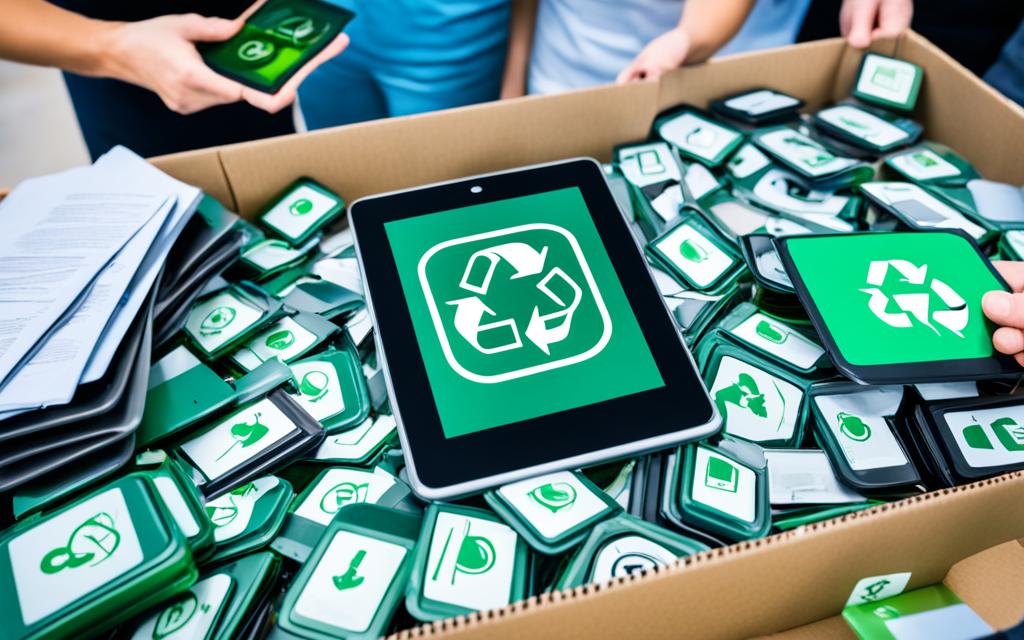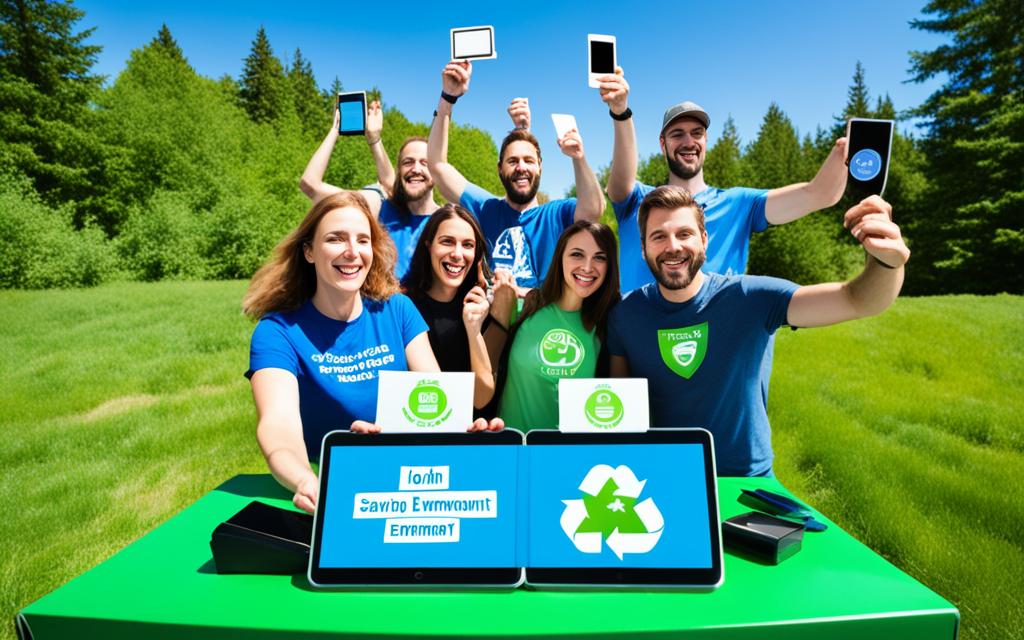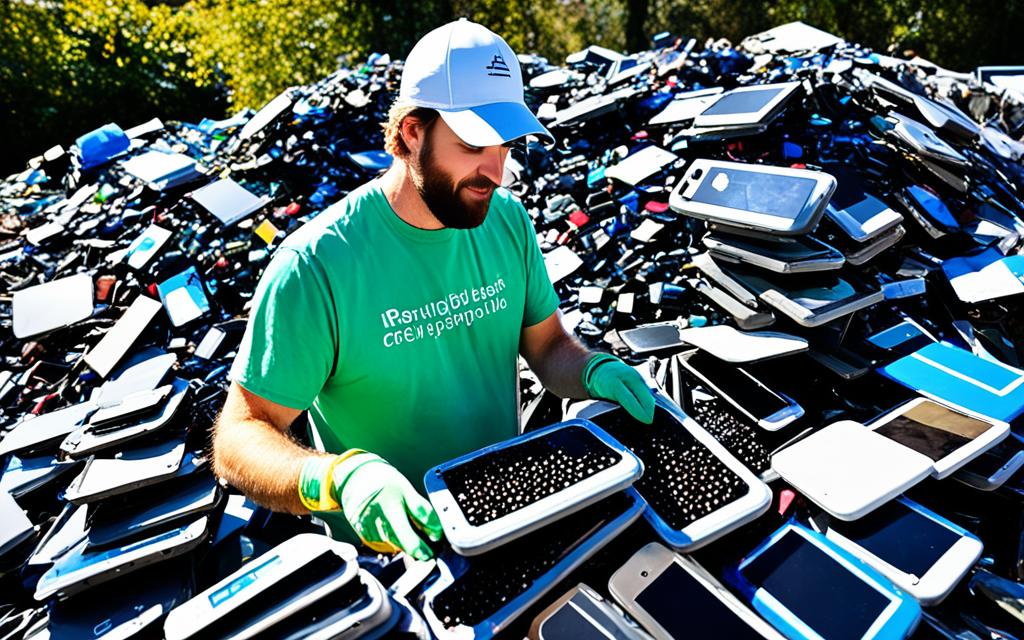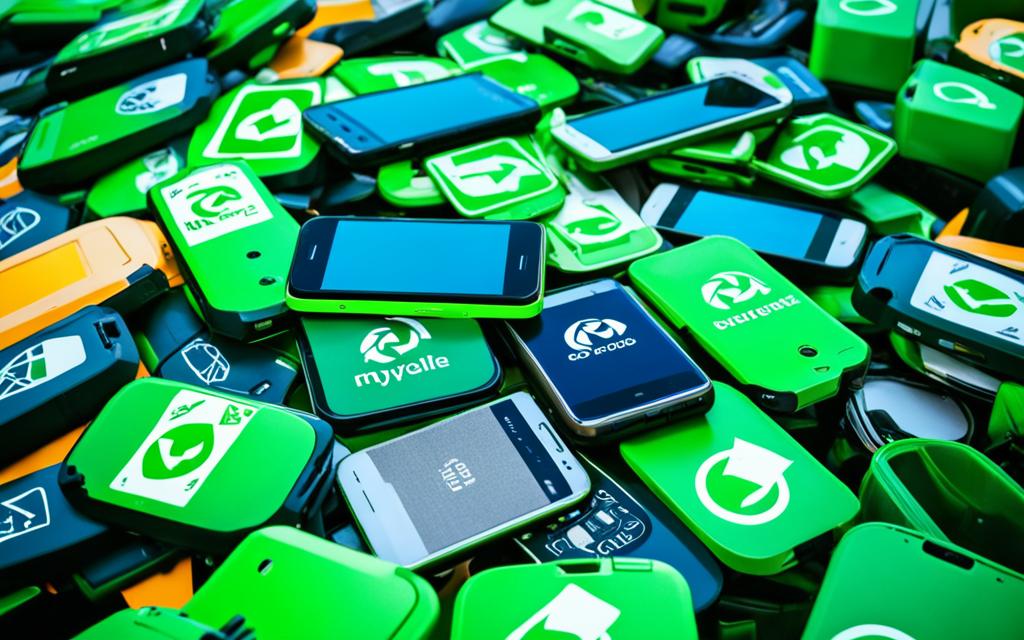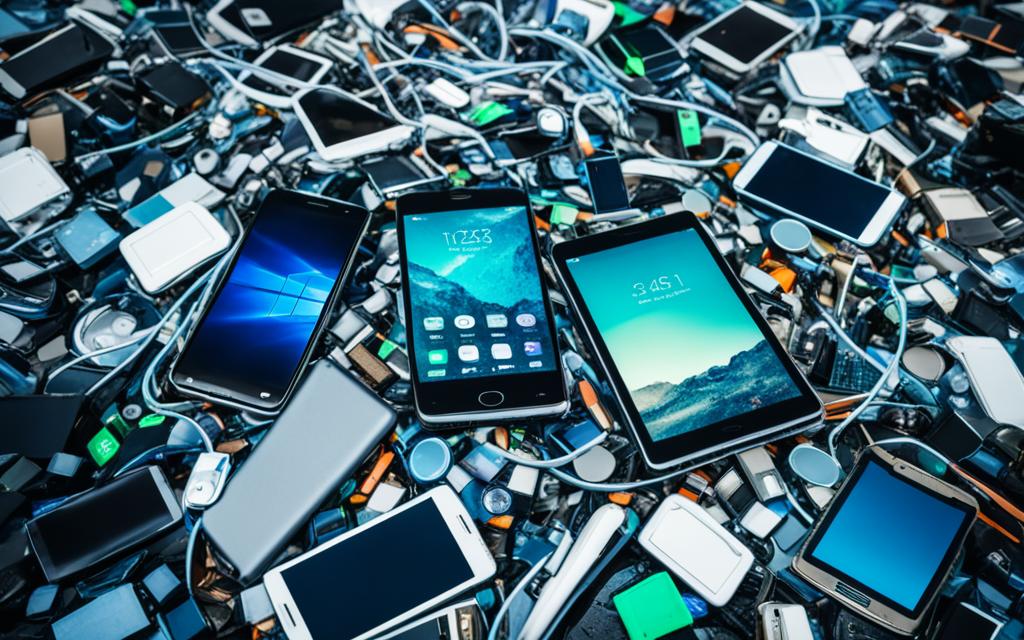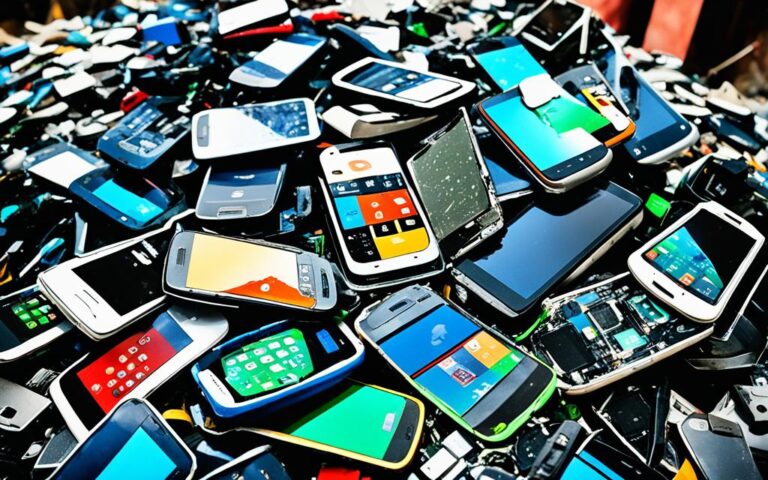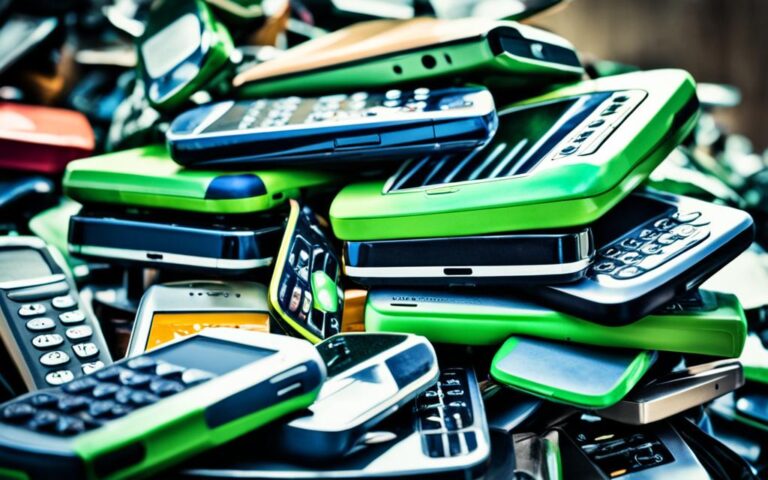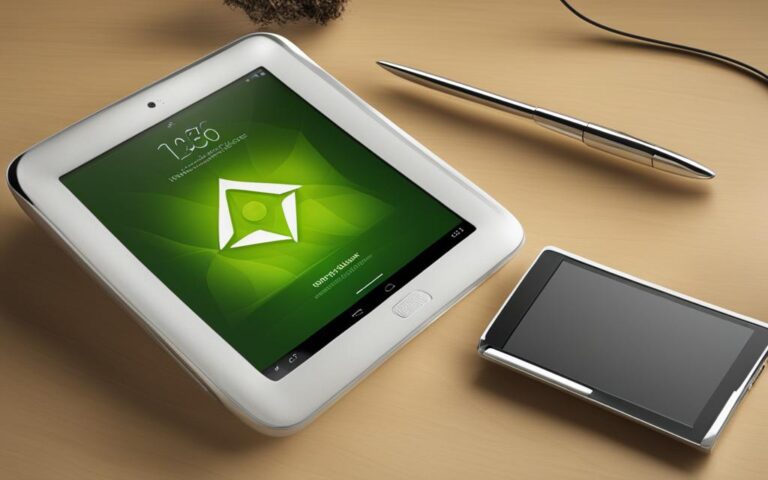How to Organize a Tablet Drive Recycling
Welcome to our guide on how to organise a tablet drive recycling event. If you’re passionate about protecting the environment and promoting sustainability, this is the perfect opportunity for you to make a positive impact. Tablet drive recycling events not only help in reducing e-waste but also create awareness about the importance of responsible electronic device disposal. In this article, we will provide you with step-by-step instructions to organise a successful and environmentally friendly tablet drive recycling event.
To start organising your tablet drive recycling event, you need to first understand the significance of electronic device disposal and its impact on both cybersecurity and the environment. Proper disposal of electronic devices is essential to protect sensitive information from being exploited and prevent cyber threats.
Stay tuned as we delve into the importance of electronic device disposal and explore effective methods for removing data from devices, as well as the safe disposal of these devices to prevent environmental damage. We will also discuss the environmental impact of electronic devices and the benefits of recycling, along with highlighting corporate initiatives for electronic device recycling.
By the end of this article, you will have all the information you need to organise a successful tablet drive recycling event and contribute towards a greener and more sustainable future.
Importance of Electronic Device Disposal
Proper disposal of electronic devices is crucial to protect sensitive information and prevent cyber threats. In today’s digital age, computers, smartphones, and tablets have become an integral part of our lives. These devices store valuable data, including personal documents, financial information, and login credentials. If not disposed of securely, these devices can become prime targets for cybercriminals.
By following best practices for electronic device disposal, individuals can safeguard their personal information and prevent identity theft. It is essential to understand the potential risks associated with improper disposal and take necessary precautions to mitigate them.
The Risks of Improper Disposal
When electronic devices are discarded without proper disposal methods, sensitive information can easily fall into the wrong hands. In the wrong hands, this data can be exploited for various fraudulent activities, including identity theft, financial fraud, and corporate espionage.
“Proper disposal of electronic devices is not only crucial for individual data security but also for safeguarding sensitive corporate and government information.”
Incidents of data breaches and hacking are on the rise, making it more important than ever to properly dispose of electronic devices to protect ourselves and our organizations from cyber threats.
Best Practices for Electronic Device Disposal
To ensure the secure disposal of electronic devices, consider the following best practices:
- Erase all data: Before disposing of any electronic device, make sure to erase all data stored on it. This includes removing personal files, wiping the device’s memory, and performing a factory reset.
- Physical destruction: For devices that cannot be securely erased, such as hard drives or solid-state drives, physical destruction is the recommended method. Use professional services or tools to physically destroy the storage media, ensuring that no data can be recovered.
- Find reputable recycling options: Look for reputable recycling programs that specialize in electronic waste management. These programs ensure that devices are recycled in an environmentally friendly manner and that any remaining data is securely destroyed.
The image above emphasizes the importance of electronic device disposal in a visually engaging and relevant manner.
In conclusion, electronic device disposal is not just about getting rid of old gadgets. It is a crucial step in protecting sensitive information and preventing cyber threats. By following best practices for electronic device disposal, individuals and organizations can safeguard their data, reduce the risk of identity theft, and contribute to a safer and more secure digital world.
Methods for Removing Data from Devices
When it comes to removing data from devices, there are several effective methods that can help ensure the security and privacy of your information. Whether you’re dealing with computers, smartphones, tablets, or other electronic devices, it’s important to follow proper sanitization methods to prevent unauthorized access to your personal data. Here are some proven techniques:
1. Disk Cleaning Software, Secure Erase Commands, and Disk Wiping Utilities
For computers, using disk cleaning software, secure erase commands, or disk wiping utilities can be highly effective in removing data. These tools overwrite the existing data on your hard drive multiple times, making it nearly impossible to recover. By completely erasing all traces of your files, you can ensure that sensitive information cannot be accessed or retrieved.
2. Factory Reset for Smartphones and Tablets
For smartphones and tablets, a factory reset can be a reliable method for removing data. This process restores the device to its original factory settings, effectively wiping out all personal information and installed apps. However, it’s essential to note that a factory reset may not completely remove data from the device’s internal storage. To ensure complete sanitization, physically removing the memory cards or performing additional steps may be necessary.
3. Resetting Digital Cameras and Gaming Consoles
Similar to smartphones and tablets, digital cameras and gaming consoles can also be reset to remove data. Performing a factory reset on these devices will help eliminate personal information and restore them to their default settings. Remember to remove any memory cards used in these devices to ensure all data is securely removed.
4. Memory Card Removal and Factory Reset for Office Equipment
When disposing of office equipment such as printers and copiers, it’s crucial to remove the memory cards and perform a factory reset. This ensures that any stored data, such as documents and network configurations, is effectively erased. By taking these steps, you can prevent the risk of sensitive information being exposed.
5. Overwriting Data and Clearing Media
As an additional sanitization method, overwriting data and clearing media can make it extremely challenging or impossible to recover any information. This process involves writing random data over the existing data on a device, rendering it unrecoverable. While this method may take longer, it provides an extra layer of security and ensures that sensitive data cannot be retrieved.
6. Physical Destruction of Devices
When all else fails or when dealing with highly sensitive information, physical destruction of devices is the ultimate method to prevent data retrieval. Disassembling the device and destroying the individual components, such as the hard drive or memory chips, ensures that no data can be recovered. However, it’s important to be aware of any environmental regulations surrounding the disposal of electronic waste.
Remember, the method you choose for removing data will depend on the type of device and the level of security required. Consider the sensitivity of the information stored on the device and use the appropriate method to ensure complete data sanitization.
By following these methods, you can protect your personal information and prevent unauthorized access. The effective removal of data from devices is a crucial step in maintaining your privacy and cybersecurity.
Safely Disposing of Electronic Devices
Safely disposing of electronic devices is crucial to prevent environmental damage. Electronic waste, or e-waste, contains materials that can be recovered and reused, such as plastics, glass, metal, and aluminum. It is important to completely erase all personal information before disposing of devices.
To ensure the safe disposal of electronic devices, there are several recycling options available:
- Dell Reconnect
- World Computer Exchange
- eBay for Charity
- Amazon gift cards
- Apple’s GiveBack program
- Best Buy recycling
- Recycling programs by printer manufacturers and mobile phone carriers
These options provide convenient and responsible ways to dispose of electronic devices while minimizing their impact on the environment. By choosing one of these options, individuals can contribute to the reduction of e-waste and support sustainable practices.
Recycling Options for Electronic Device Disposal
| Recycling Option | Description |
|---|---|
| Dell Reconnect | Allows customers to drop off unwanted electronics at participating Goodwill locations. |
| World Computer Exchange | Accepts donations of working computers and other electronics for redistribution to schools, universities, and community organizations in developing countries. |
| eBay for Charity | Enables sellers to donate a percentage of their sales to nonprofits, including organizations that provide electronic recycling services. |
| Amazon gift cards | Offers gift cards in exchange for qualifying electronic devices through the Amazon Trade-In program. |
| Apple’s GiveBack program | Allows customers to trade in eligible devices for credit towards a new Apple product or receive an Apple Store Gift Card. |
| Best Buy recycling | Provides free recycling for a wide range of electronic devices, including computers, tablets, and cell phones, at Best Buy stores. |
| Recycling programs by printer manufacturers and mobile phone carriers | Many printer manufacturers and mobile phone carriers have their own recycling programs, allowing customers to return old devices for proper disposal. |
By utilizing these recycling options, individuals can ensure that their electronic devices are disposed of safely and responsibly, reducing the environmental impact of e-waste and promoting sustainable practices.
Environmental Impact of Electronic Devices
Electronic devices have a significant environmental impact due to the presence of toxic substances such as lead, mercury, and cadmium. These hazardous materials can leach into the soil and water, posing serious threats to ecosystems and human health.
However, recycling electronic devices offers a sustainable solution to mitigate this environmental harm. By properly disposing of old devices through recycling programs, we can prevent the release of harmful materials into the environment and reduce the need for new resource extraction.
Many manufacturers, including Apple, have taken steps to incorporate recycled content into their products. This not only reduces the demand for raw materials but also promotes a circular economy and supports a more sustainable approach to manufacturing.
In some states, there are recycling laws that require individuals to responsibly dispose of their old electronic devices. These measures aim to increase awareness of the environmental impact of e-waste and ensure that proper recycling practices are followed.
When it comes to recycling electronic devices, it is essential to choose reputable and certified disposal methods. This ensures that the recycling process is carried out responsibly and in compliance with environmental regulations.
| Recycling Benefits | Sustainable Practices | Natural Resources |
|---|---|---|
| – Reduces e-waste | – Promotes a circular economy | – Conserves valuable resources |
| – Prevents environmental pollution | – Reduces energy consumption | – Minimizes the need for resource extraction |
| – Protects ecosystems and human health | – Lowers greenhouse gas emissions | – Preserves biodiversity |
By recycling electronic devices, we can make a positive impact on the environment, conserve natural resources, and protect our planet for future generations.
Benefits of Recycling Electronic Devices
Recycling electronic devices brings numerous benefits that contribute to a more sustainable future. By participating in electronic device recycling, individuals and communities can make a positive impact on the environment while also enjoying several advantages.
Conservation of Natural Resources
One of the key benefits of recycling electronic devices is the conservation of natural resources. Recycling allows for the recovery of valuable materials from old devices, reducing the need for extensive mining and manufacturing of new materials. By recycling, we can help preserve non-renewable resources for future generations, promoting a more sustainable use of our planet’s finite resources.
Reduction in Energy Consumption and Greenhouse Gas Emissions
The production of new electronic devices requires substantial amounts of energy and contributes to greenhouse gas emissions. However, by recycling electronic devices and utilizing recovered materials, we can significantly reduce energy consumption and the associated carbon footprint. Recycling helps lower greenhouse gas emissions, mitigating the impact of electronic device production on climate change and supporting sustainable practices.
Protection of Ecosystems and Human Health
Proper disposal of electronic devices through recycling prevents the release of toxic substances into the environment. Electronics often contain hazardous materials like lead, mercury, and cadmium, which can pollute ecosystems and pose risks to human health if not handled correctly. By recycling electronic devices, we contribute to the protection of ecosystems, preserving biodiversity, and safeguarding the well-being of both nature and humanity.
| Benefits of Recycling Electronic Devices | |
|---|---|
| Conservation of natural resources | ✓ |
| Reduction in energy consumption and greenhouse gas emissions | ✓ |
| Protection of ecosystems and human health | ✓ |
Corporate Initiatives for Electronic Device Recycling
Many companies have taken the initiative to promote electronic device recycling and responsible e-waste management. These corporate initiatives not only contribute to environmental responsibility but also demonstrate a commitment to sustainable practices. Let’s take a closer look at some of the notable initiatives:
Apple’s GiveBack Program
| Initiative | Description |
|---|---|
| Apple’s GiveBack Program | Apple’s GiveBack program offers gift cards or in-store credit for qualifying products and accepts all products for recycling. |
Retailer Recycling Programs
“We believe in the importance of taking responsibility for e-waste and providing convenient options for device recycling.” – Best Buy
“Office Depot is committed to reducing e-waste and has established recycling programs to support this goal.” – Office Depot
“At Staples, we prioritize environmentally responsible practices, and our electronics recycling program is a testament to that commitment.” – Staples
The retailers above, including Best Buy, Office Depot, and Staples, offer recycling options for various electronics, making it easier for consumers to dispose of their devices responsibly.
Sprint’s Buyback Program
Sprint, a leading mobile carrier, has introduced their Buyback program, offering account credits for mobile phones. This initiative incentivizes customers to recycle their old devices and contribute to e-waste reduction.
Manufacturer Recycling Programs
In addition, prominent manufacturers like HP, Epson, and Canon have established their own recycling programs. These initiatives ensure that electronic devices produced by these companies can be safely and responsibly disposed of when they reach the end of their life cycles.
- HP offers free recycling of HP ink and toner cartridges, laptops, and other devices through HP Planet Partners.
- Epson provides a recycling program for inkjet cartridges, scanners, projectors, and more.
- Canon operates the Canon Recycle Program, allowing customers to recycle inkjet cartridges and select devices.
These corporate initiatives highlight the importance of e-waste management and environmental responsibility. By promoting electronic device recycling and providing convenient options for consumers, companies play a crucial role in reducing the negative impact of electronic waste on the environment.
Conclusion
Tablet drive recycling events provide communities with a unique opportunity to come together and make a real difference in reducing e-waste and promoting environmental responsibility. By participating in these events and following proper disposal methods, individuals can play a crucial role in making a positive impact on the environment.
It is important to ensure that personal information is securely erased from electronic devices before recycling them. By doing so, we not only protect sensitive information but also contribute to the conservation of natural resources.
Through the utilization of reputable recycling options, such as Dell Reconnect, Apple’s GiveBack program, and Best Buy recycling, we can ensure that e-waste is properly handled and disposed of. By choosing these responsible options, we actively contribute to the reduction of the environmental impact caused by electronic waste.
Raising awareness about the importance of tablet drive recycling and electronic device recycling as a whole is crucial. By educating ourselves and others about the need to protect sensitive information, conserve natural resources, and reduce the environmental impact of e-waste, we can create a sustainable future for ourselves and future generations.
FAQ
Why is it important to properly dispose of electronic devices?
Proper disposal of electronic devices is crucial to protect sensitive information and prevent cyber threats. Computers, smartphones, and tablets contain valuable data that can be exploited if not disposed of securely. It is important to follow best practices for electronic device disposal to safeguard personal information and prevent identity theft.
What are the methods for removing data from devices?
There are several effective methods for removing data from devices. For computers, disk cleaning software, secure erase commands, and disk wiping utilities can be used. Smartphones and tablets can be reset to factory settings, and the memory cards can be physically removed. Digital cameras and gaming consoles can also be reset, and office equipment should have their memory cards removed and be reset to factory defaults. Overwriting data and clearing media are additional sanitization methods that can make data unrecoverable. Physical destruction of devices is the ultimate way to prevent data retrieval.
How can electronic devices be safely disposed of?
Safely disposing of electronic devices is crucial to prevent environmental damage. Electronic waste, or e-waste, contains materials that can be recovered and reused, such as plastics, glass, metal, and aluminum. It is important to completely erase all personal information before disposing of devices. Options for safe disposal include Dell Reconnect, World Computer Exchange, eBay for Charity, Amazon gift cards, Apple’s GiveBack program, Best Buy recycling, and recycling programs by printer manufacturers and mobile phone carriers.
What is the environmental impact of electronic devices?
Electronic devices can have a significant environmental impact due to the presence of toxic substances like lead, mercury, and cadmium. Recycling electronic devices helps conserve natural resources and prevents the release of harmful materials into the environment. Many manufacturers, including Apple, incorporate recycled content into their products. Recycling laws in some states require people to properly dispose of old electronic devices. It is important to choose reputable and certified disposal methods to ensure responsible recycling.
What are the benefits of recycling electronic devices?
Recycling electronic devices brings numerous benefits. It helps conserve natural resources by recovering valuable materials from old devices, reducing the need for mining and manufacturing new materials. Recycling also reduces energy consumption and greenhouse gas emissions associated with the production of new devices. Additionally, proper disposal of electronic devices prevents the release of toxic substances into the environment, protecting ecosystems and human health.
What are some corporate initiatives for electronic device recycling?
Many companies have implemented initiatives to promote electronic device recycling and responsible e-waste management. For example, Apple’s GiveBack program offers gift cards or in-store credit for qualifying products and accepts all products for recycling. Best Buy, Office Depot, and Staples offer recycling options for various electronics. Sprint’s Buyback program offers account credits for mobile phones, and manufacturers like HP, Epson, and Canon have their own recycling programs. These initiatives highlight the importance of corporate environmental responsibility and sustainable practices.

